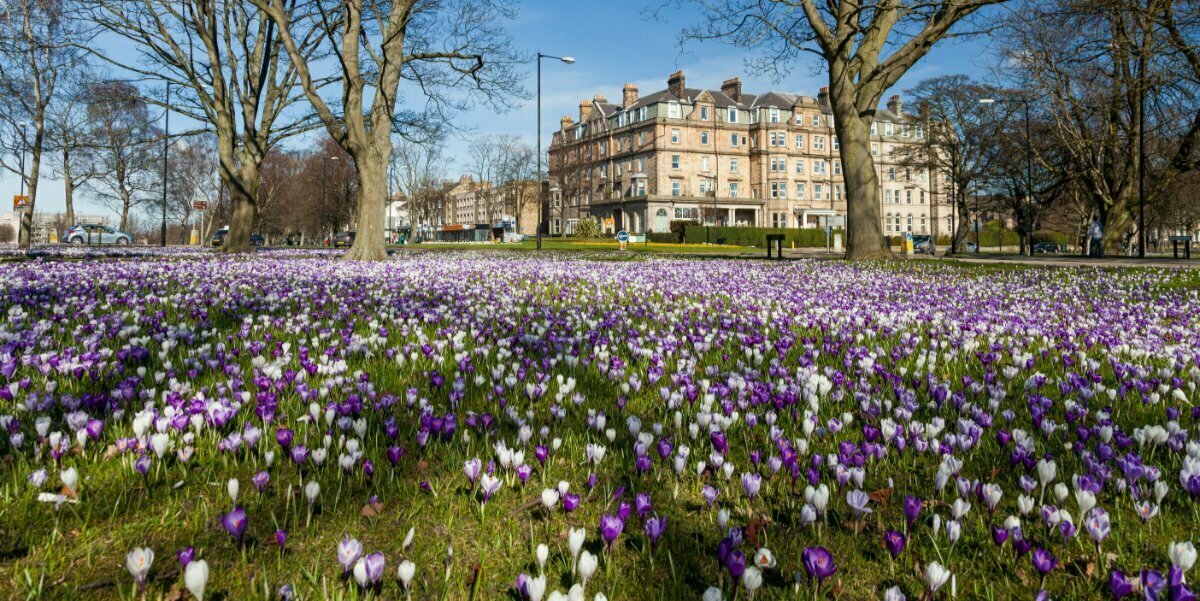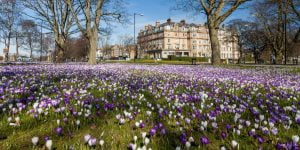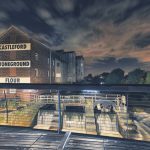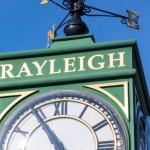
This isn’t an internationally known fact, but England has several Spa Towns. Harrogate is one of these spa towns. These were settlements that grew up around springs that flowed from the Earth. Early settlers of Britain found these springs to be magical and would often attest healing properties to the water. As a result, we have several spa towns in England, each of which has its own unique history.
Today we are going to explore the history of Harrogate to find out if it will make a good staycation destination for your family this coming holiday season. This guide will be of interest to those who live there, and to those who are just passing through.
The Early Days of Harrogate
Harrogate started its life as two small settlements. There was low Harrogate and High Harrogate and eventually, these two amalgamated into one town. It is thought that Harrogate thrived due to its proximity to nearby Bilton. If this is the case, then the settlement grew up with nearby lands belonging to a man named Billa. Bilton formed a Township with Harrogate in 1866, but they have split since then.
Harrogate is not recorded in the Doomsday Survey, however, Bilton is. At as blasted as having only two owners but 17 households. This would have made it quite large for those times. In fact, the first mention of Harrogate and history is in 1330. Just as a point of reference, the Doomsday Survey was completed in 1086.
In those early years, Harrogate and Bilton shared a border. They were both situated within the Royal Forest of Knaresborough (which of course meant that there could be no poaching). Hunting rates belonged to King Edward the 3rd. Until 1372, when he gifted the Royal Forest to his son John. From this point forward, the Duchy of Lancaster were the people responsible for the land at Harrogate.
For a few hundred years, the land here was considered sleepy and nothing much happened. It wasn’t until the 16th century when the spring was discovered that Harrogate turned into a spa town. The spring at Harrogate was known for being sulphur-rich and ‘chalybeate’, which just means there was a mixture of salts and iron-based minerals in there. This mixture of salts and iron based minerals made for an attractive mineral spring. In Old England were always on the lookout for a spell or miracle cure or two. The mineral-rich waters here would have attracted tourists from every area of the country.
The Harrogate Spa
The Harrogate Spa was discovered in 1571 by a man named William Slingsby. He found the water from the Tewit Well to have an exceptionally high mineral content. He had been to the Belgian town of Spa and found that high Harrogate’s water was of the same calibre. Note that in the 16th century the towns were still split between High Harrogate and Low Harrogate. We mentioned that this well contained for ferruginous waters, which were mixed with sulphur in a Chalybeate blend. This was the first Chalybeate source found in England and it lay in a forest. You wonder how all those trees survived with the high mineral content in the water.
Roughly 60 years later, St John’s Well was also discovered in Harrogate. the original date of that well was 1631. It has been rebuilt many times over the years. The well that stands today was built in 1842 but had been rebuilt on top of an earlier well from 1786. It is Victorian in architecture and is a grade two listed building, run by Historic England.
These two chalybeate wells were enough to bring tourists from up and down Yorkshire and eventually from all over the country. Sulphur and other minerals were discovered in springs across High and Low Harrogate. By 1680 the population had swollen somewhat, thanks to that added tourism. By the 17th century, several Inns had opened, within both Low Harrogate and High Harrogate. The two settlements were well on their way to merging.
Fun Facts About Harrogate
Let’s pause the history for a moment to talk about some of the interesting things that have happened in this area over the years. Harrogate is chock full of fun facts. As ever, we like to dish the gossip on any of our local town guides. So, here’s the scoop on Harrogate:
- A book published in 1626 was one of the first to document the medicinal properties of the sulphur-infused water beneath Harrogate. The book was named the English Spa Fountain.
- In 1982, Harrogate played host to the Eurovision Song Contest at the local convention Centre, putting it on the European map for good.
- By the end of the 17th century, 88 different springs were known of between High Harrogate and Low Harrogate. It was a veritable orgy of spas.
- When Charles Dickens visited here, he called it a queer place. Later, in 1926, Agatha Christie would go missing for 11 days and turn up in Harrogate with amnesia, thereby proving him right.
- Harrogate Turkish Baths date back to the early 19th century and are one of the oldest of their kind in the entire country. They also once played host to a Sex Pistols video. You will see Harrogate Turkish baths in the music video for Madame Butterfly released in 1984[i].
All in all, we would say Harrogate is an interesting place to live and visit. Let’s return to the history and find out more about it before we commit to going on any holidays there.
Industrial Harrogate
The Chapel of Saint John was built in 1749. In 1786 Wedderburn house was built. Then in 1788, the town got its first theatre. The town expanded rapidly in this era due to its high-quality mineral spa water. The Enclosure Act of 1770 saw the Duchy of Lancaster enclose the whole of the Royal Forest of Knaresborough. 200 acres of land were reserved as a public common and remain as a public space.
An 1826 Bath Hospital was built in town. In 1831, Christchurch was open, and the population of the town was roughly 4000 people. By 1841, a body of men was elected as a town council by an Act of Parliament. These men would oversee the paving, cleaning, and lighting of the town. The Royal Pump Room opened in 1842 and a water company moved in in 1846. Harrogate had gas lighting as of the following year.
the railway reached Harrogate in 1848. The farther north you were and the farther from London, the longer it took railway lines to reach you. Harrogate is on the Yorkshire line. Trains gave a severe boost to the town’s tourism. In 1884 Harrogate got its first mayor and by 1887 the Public Library had opened. In 1870, Samson Fox created gas central heating in the basement of a Grove house. His house on Skipton Road was the first in Yorkshire to have both gas lighting and heating. It was he who then brought this technology to the masses.
In 1897, Harrogate had already gained an electricity supply. The Royal Baths opened three years later. In the year 1900, Harrogate Theatre opened. The town had a population of 26,000 people in the 1901 census. Let’s not skip past George Oliver, who was an 1893 Harrogate doctor who first discovered adrenaline influenced the body’s circulation.
Modern Harrogate
The Royal Hall was built in 1903. There was a gap in history across the entire UK as everyone went to war. The Harrogate War Memorial was erected in 1923. 879 names are visible in Harrogate’s War Memorial. These names were taken across both wars. Twenty Three Harrogate citizens lost their lives in the First World War. Local historian Malcolm Neesam records that this amounted to approximately 4.4% of the Harrogate population at the time.
Harrogate did not escape bombing in World War Two. The Majestic Hotel was hit by three bombs: the first bomb lodged in a staff bedroom and not exploding. The bombs fell on the 12th of September 1940. This is recorded as being the only occasion during World War Two when Harrogate was bombed. However, the town played an important role that our enemies totally underestimated.
There were two Ministry of Defence sites operating for the Royal Air Force out of the town of Harrogate. St. Georges in the Southwest of the town was home to the medical training establishment. There was a women’s Auxiliary Air Force Training centre in the area. And several of the hotels in Harrogate town centre were adapted during the Second World War for use by the Royal Air Force. Harrogate town centre was requisitioned as a personnel reception centre. While the Germans were bombing London, where they thought we kept all our intelligence, the RAF shifted its bases to Harrogate which was only ever bombed once. It was a wise move indeed.
It wasn’t just the RAF either. Harrogate’s larger hotels played home to some government offices when they were evacuated from London because of the bombing.
In 1933, the Sun Pavilion and the Sun Colonnade were built, and by 1951, the Harrogate population had reached 50,000 people.
Post War Harrogate
Crimplene was invented in the 1950s and was named after Crimple Valley, near Harrogate. In 1953 they turned the Royal pump room into a museum, and in 1969 the royal baths were forced to close. In 1971, that first well that sparked the town’s wealth was finally sealed for good.
In 1982, Harrogate gained its first conference centre. And in 2008, the Royal Hall was finally restored. In 2007, two metal detectorists found a 10th century Viking hoard near Harrogate. 700 coins were marked, and some come from as far out as the Middle East. The hoard was turned over to the British Museum, who said that it was one of the most significant finds made in the last 150 years.
Nowadays, Harrogate is a thriving and leafy Yorkshire town which makes for a viable commuter town to the rest of Yorkshire It is filled with historic sites and landmarks and makes a good place to spend a weekend or a weeklong staycation in the UK. Let’s move on to who the famous faces to have come from Harrogate might be, on the off chance that you meet them in the supermarket.
Famous people from Harrogate
With such a long history associated with tourism and entertainment, we expect that Harrogate has some fantastic famous people to have come from it. We did our research and below is a list of our favourite famous faces to have come from Harrogate:
- John Champion, who is a commentator for ESPN, comes from Harrogate.
- Peter Exley is famous in America for building the Ronald McDonald House in Illinois. He is an architect who was born here.
- Barnsley footballer Liam Kitching is a Harrogate man.
- Pop and rock singer-songwriter Sylvia McNeil is from Harrogate.
- John Willett. who you might not have heard of, but who is a super teacher who works for Harvard Business School and devises new methods of learning.
- Let’s not forget journalist David Yelland.
Now that we have reviewed the most famous faces to be found on the streets of Harrogate, let’s talk about what you can do in Harrogate for fun. Trust us, there’re loads of things!
The Best Attractions in Harrogate
Whether you are passing through for an afternoon or whether you are stuck here for life, here are the things you should try and visit.
Historic sights and Landmarks
Locals love the Valley Gardens in Harrogate. This is an English Heritage-run site. These gardens are grade II listed buildings, which the English sometimes do to preserve outdoor spaces as well as actual buildings. Valley Gardens can be found in Low Harrogate and have plenty of woodland and beautiful waterways to walk around. This is a must-see sight for all those who love gardens. the gardens might be an outdoor attraction, but the pavilion is very much indoors and the building at the centre of the garden is a landmark and historic sight.
Ripley Castle and Gardens are nearby and the grounds are stunning. They have a deer park – and who doesn’t love to get close to a cute deer. There is a duck pond, it has its own tearoom, and of course, the castle and gardens are the main attraction. Found on the edge of the Yorkshire Dales and acres of land, the castle is a 14th-century country house that survived plagues, military occupation, and more. Now you get married in it.
Stately Trains in Harrogate is a wonderful, old-world feeling train depository that features numerous old carriages. Young people love to explore them, and older trainspotters can’t get enough. It’s a nice day out with royal saloon care and several vintage trains to admire.
Galleries and Museums
Visit the Royal Pump Museum while you are in town to learn about the Victorian machinations that powered the Industrial Revolution. The pump museum took water out of the sulphur wells, catering to an average of 15,000 tourists, every year at its peak point. The museum includes shop displays, a hotel, and the Stray, the most famous park in town.
There is a Mercer Art Gallery in Harrogate which has an exemplary collection of fine works of art. They focus on 19th and 20th-century artists. This art history museum/gallery has seen thousands of tourists over the years. If you want to buy some local fine art of your own. There are two others to choose from. There’s the Whitewall Galleries on James Street and Castle Fine Art, just up the road.
Last but not least, Knaresborough Castle and Museum is set in the forest overlooking the River Nidd. This ruined castle includes a dungeon and a huge helping of English history. This castle was the estate that would have held the enclosed royal Knaresborough Forest, back in the day. From here, the poachers would have been hunted down.
Sports and Recreation
As for sports in Harrogate, you can rent a sports court space from the town council, or you can head to the Rosset Sports Centre for block bookings of fitness classes.
Harrogate Town AFC is the local football club. They play in the stadium of the same name and have covered seating for those chilly English Sunday afternoons. Harrogate has their own rugby club, too, simply known as Harrogate RUFC.
There are four golf clubs within striking distance of Harrogate. Head south for the Pannal Golf Club and the Rudding Park Golf Club, or north for the Oakdale Golf Club or the Harrogate Gold Club.
Outdoor attractions
This might strike you as a little bit weird, but the National Trust oversee a collection of rocks outside of town known as Brimham Rocks. The moorland situation of these rocks is what makes them so special. There shouldn’t really be rock formations in the middle of moors. When this happens, it tends to be because a glacier melted in the last Ice Age and the rocks travelled downhill. Dogs must be kept on leads here and they forbid drones, but otherwise, it is a pleasant hike.
The second garden in town that everyone loves, the RHS Garden Harlow Carr is a worthwhile site. They run events year-round, which are mainly family-based. They sport beautiful wildflower beds and stunning formations of plants. You will find this place delightfully on the edge of the Yorkshire countryside, with views for miles on a clear day.

Harrogate Stray Image: sjm1/Shutterstock.com
You also need to have a walk around Harrogate Stray, which is easy as it is in the town centre. It dates back to 1778 and encompasses around 200 acres of trees & greenery. It is open and free to access all year round and as you can see above it’s stunning when the Crocuses are out!
Our final favourite outdoor attraction is Llama Park at Nidderdale. This farm lets you pet and trek with real-life, super-soft llamas. They also have alpacas here, which are almost the same animal but a bit smaller. You can even adopt a llama or alpaca to help them carry on their good work.
Shopping and Retail
There are several shopping centres in town. The Christmas market is held annually on Montpellier Hill. Westminster Arcade and the Victoria Shopping Centre are two of the best in town.
Where to Eat and Drink in Harrogate?
If you like a little Greek, try the Mykonos Bar and Grill in Mayfield Grove. There’s always Papa’s Authentic Mediterranean Cuisine restaurant, or the Taverna Harrogate for some finer dining, too.
What Nightlife Does Harrogate Have?
There are a few places to party in Harrogate that all cover multiple tastes. The Blues Bar is good for the suave, the Viper Rooms are great for group outings, and the Revolucion de Cuba Harrogate is considered the best nightclub. If you just want a pint, try the Harrogate arms.
Other Notable Attractions in the Area
Now that you know where all the good bits are in town, here are some of the other things you ought to try and cover on a visit. There are great attractions in the surrounding Yorkshire countryside, too.
Other attractions include:
- Take the kids to the Parthian Climbing Centre and let them burn off some steam.
- Visit the Cold Bath Brewing Company and take a tour.
- Go and see a show in either the Harrogate Theatre or the gaudier Royal Hall Theatre.
- Cut across the end of the Harlow Corr Gardens and you will come to a shaded area of woodland known as the Pinewoods. It’s a nice place for a cool walk on a hot day.
How to get there?
Wondering how to get to Harrogate? We’d be much more helpful as guides if we told you that part so here goes.
By Road
Follow the M1 north or south until you reach the A59.
By Rail
Harrogate Train Station is on the Northern Rail Line.
By Air
The nearest airport is Leeds-Bradford International.
Got Five Minutes Left?
Are you on your break? Stopped to eat? Still interested in finding your dream UK location? Hop on over to our website and explore our other travel guides or find us on Facebook for more.
[i] https://yourharrogate.co.uk/news/harrogate/10-random-facts-you-didnt-know-about-harrogate/



